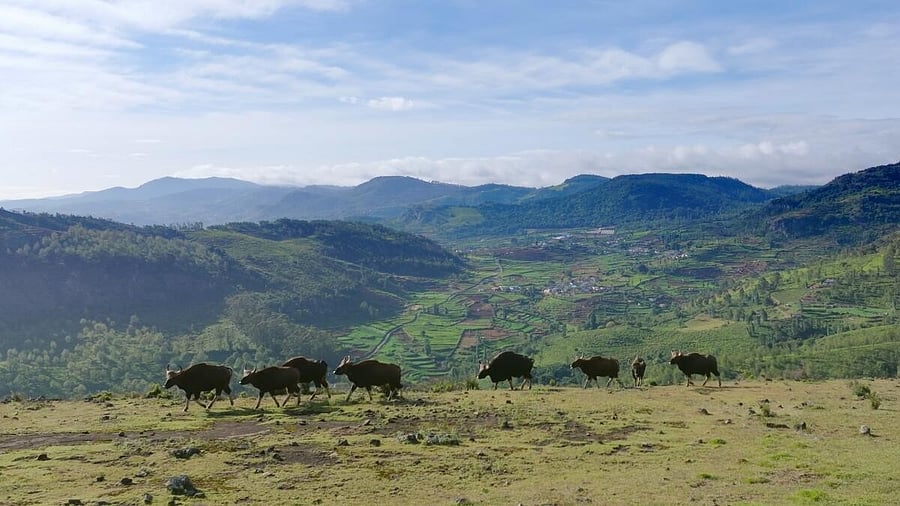
A scene from the documentary.
Credit: Special arrangement
Some films arrive quietly, without fuss, and show you what has always been there. ‘Nilgiris’ is one of them. A 75-minute walk through India’s first biosphere reserve, it doesn’t chase drama. It watches. Slowly, the forest begins to speak about animals, people, and everything in between.
The film highlights the Moyar Gorge, a deep divide that shapes how species move and habitats form. Around it, the Nilgiri Tahr walks ridgelines. The Nilgiri Salea weaves through garden undergrowth. Malabar frogs call with the rain. Dholes and hyenas appear during the day, while sloth bears and leopards show up on camera traps after dark. Fig trees host fig wasps. Hornbills glide past. Monkeys watch in silence. A tigress and an elephant share the same land, passing each other like locals. The film also traces 10,000 years of human presence, with cave paintings marking that history. Later came the tea gardens, brought in by the British. Not native, but now part of the view. Less a natural fit, more a guest that stayed.
Technically, the film holds steady. Shot over three years and shaped from 400 hours of footage, it feels patient and composed. CCTV and trap cams are used smartly, capturing animals without intrusion.
The music adds mood without taking over. Susheela Raman’s narration is clear, though the accent feels slightly distant. Directed by Sandesh Kadur and produced by Rohini Nilekani, the film lets the landscape lead.
In the end, ‘Nilgiris’ works by keeping things simple. There is no urgency or drama, just quiet attention. Sometimes that is exactly what a place like this needs